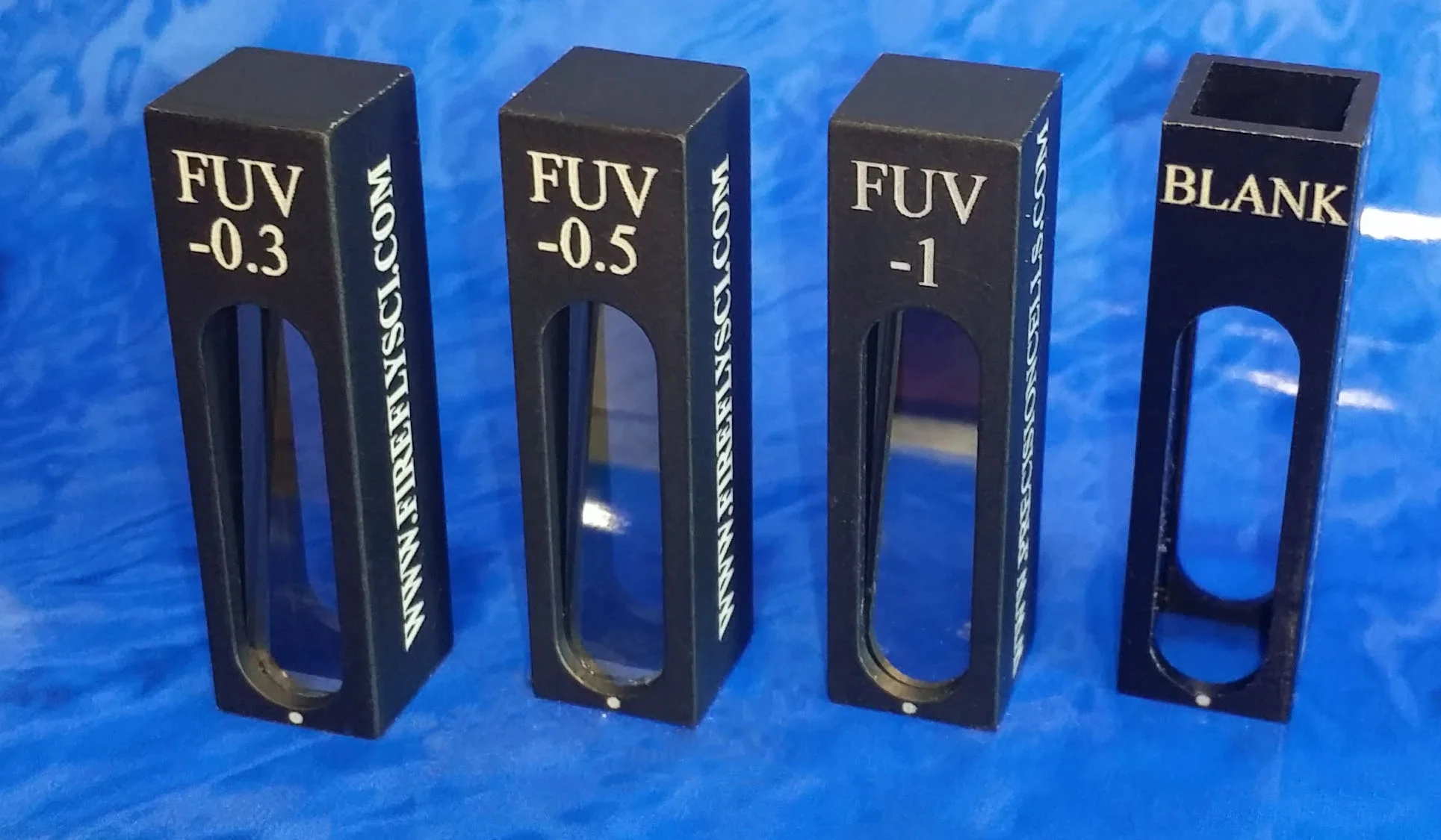10 Things to Look For When Buying a Cuvette
/The world of cuvettes can be an expansive and confusing world. With so many spectrophotometers on the market and so many different cuvette manufacturers, how do you know which one to choose?
Well the good news is that we’re about to make your job much easier. We’ve compiled a list of the Top 10 Things to Look For When Buying a Cuvette. This list is made based on the top questions that we receive from our customers.
1. Do I need a spectrophotometer or fluorimeter cuvette?
So this question is the most basic question when choosing a cuvette. The answer to this question will determine how many sides you need to have polished (optically transparent).
Spectrophotometers use cuvettes that have 2 parallel sides clear. So the light beam enters into the front window and exits the back window in one straight line.
Click here for our standard 10 mm spectrophotometer cuvette.
Fluorometers use cuvettes that have either 3 or 4 walls clear for fluorescence measurements.
Click here for our standard 10 mm fluorometer cuvette.
With this information, we can move onto Question 2.
2. What material do I need?
Material is important because this determines the range you will be able to use the cuvette for. Also material plays a major in determining the price.
A quartz cell costs much more than an optical glass cell but the quartz material has a broader transmission range.
Here is a list of our materials and their transmission ranges:
- G – Optical Glass – 340 – 2,000 nm
- UV – UV Quartz – 190 - 2,500 nm
- IR – IR Quartz – 220 - 3,500 nm
3. What lightpath do I need?
Cuvettes come in a large variety of lightpaths. 10 mm is the most common lightpath that customers choose.
We offer lightpaths ranging from 0.01 mm up to 100 mm so we have a lightpath that will suit every experiment.
4. Do I need a round or rectangular cuvette?
Cuvettes come in many shapes and sizes. The industry standard size cuvette is a rectangular cuvette with a 10 mm lightpath like our Type 1 – 10mm cuvette.
90% of our customers select either a standard 10 mm cuvette or another type of rectangular cell.
We also have round cuvettes for customers who have a cylindrical cell holder [cylindrical] for their machine.
5. What type of cover do I need?
There is a variety of different types of covers for cuvettes. This is application specific and below is a listing of our basic cuvette covers.
- PTFE Cover – Just a cover that sits on top of the cell. This is not meant for experiments that require an air tight cuvette.
- PTFE Stopper – This is for people who need a better seal that just a standard cover. The PTFE stopper allows for airtight measurements and the cuvette can be turned upside down or shaken to help mix the contents.
- Screw Cap – Screw caps have the best seal. Our Septum screw caps allow you to use this type of cuvette for anaerobic work and other airtight experiments.
- Graded Seal Tubes – See Question 7
- Specialty – We can custom make any type of closing for your application.
6. What volume do I need?
Volume is highly dependent on the lightpath you choose. Usually, the larger the lightpath, the larger the volume of the cell.
However, we do manufacturer cuvettes with reduced volumes with lightpath ranging from 1 mm up to 100 mm. These cells are for users who have a set lightpath, and want to converse their sample.
Here are the volume sizes offered by Fireflysci.com
- Macro Cuvettes
- Semi-Micro Cuvettes
- Micro Cuvettes
- Sub-Micro Cuvettes
- Ultra Micro Cuvette (Micro Focus Cell) Great for that precious dinosaur DNA.
7. Do I need to make attachments or modifications to the cuvette?
Some experiments require modifications to be made to a cuvette. Whatever the modification, we offer cuvettes with a quartz to pyrex graded seal tube. Pyrex is the easiest glass to work with when adding components to a cuvette.
8. Is Z-Dimension important for me?
The Z-Dimension, ZD, or center height of a machine is the height where the light beam enters the cuvette.
For most cuvettes the ZD is not an issue, but when you buy a sub-micro cell, you must be sure you get the correct Z-Dimension or the cell will not work.
Your machine will have one of the following Z-Dimensions:
- 8.5 mm
- 15 mm
- 20 mm
9. What is cell matching?
Cell matching is where we match 2 or more cuvettes to one another. What this does is it gives the researchers the knowledge that the cuvettes they are using will not have results that vary from cuvette to cuvette.
Cuvettes are matched upon request, within 2% of each other to ensure optimal repeatability.
FireflySci does not charge for this service.
10. How fast can I get my cuvettes?
I know this sounds funny, but it is probably the most asked question that we receive. And it is important because people want to run their experiments as soon as possible.
The good news is that 95% of our online inventory is kept in stock for immediate delivery.
This allows us the ability to ship your items the same day we receive the order.
If you have any questions on this or still need help please contact us and let us know how we can help you.
Here’s to your success!
The FireflySci Team
![firefly_logo_FINAL [Black].jpg](https://images.squarespace-cdn.com/content/v1/5411d5c0e4b02e1c8b27565a/1434491508803-XB4OF7YDY46Z72L5U5AP/firefly_logo_FINAL+%5BBlack%5D.jpg)











